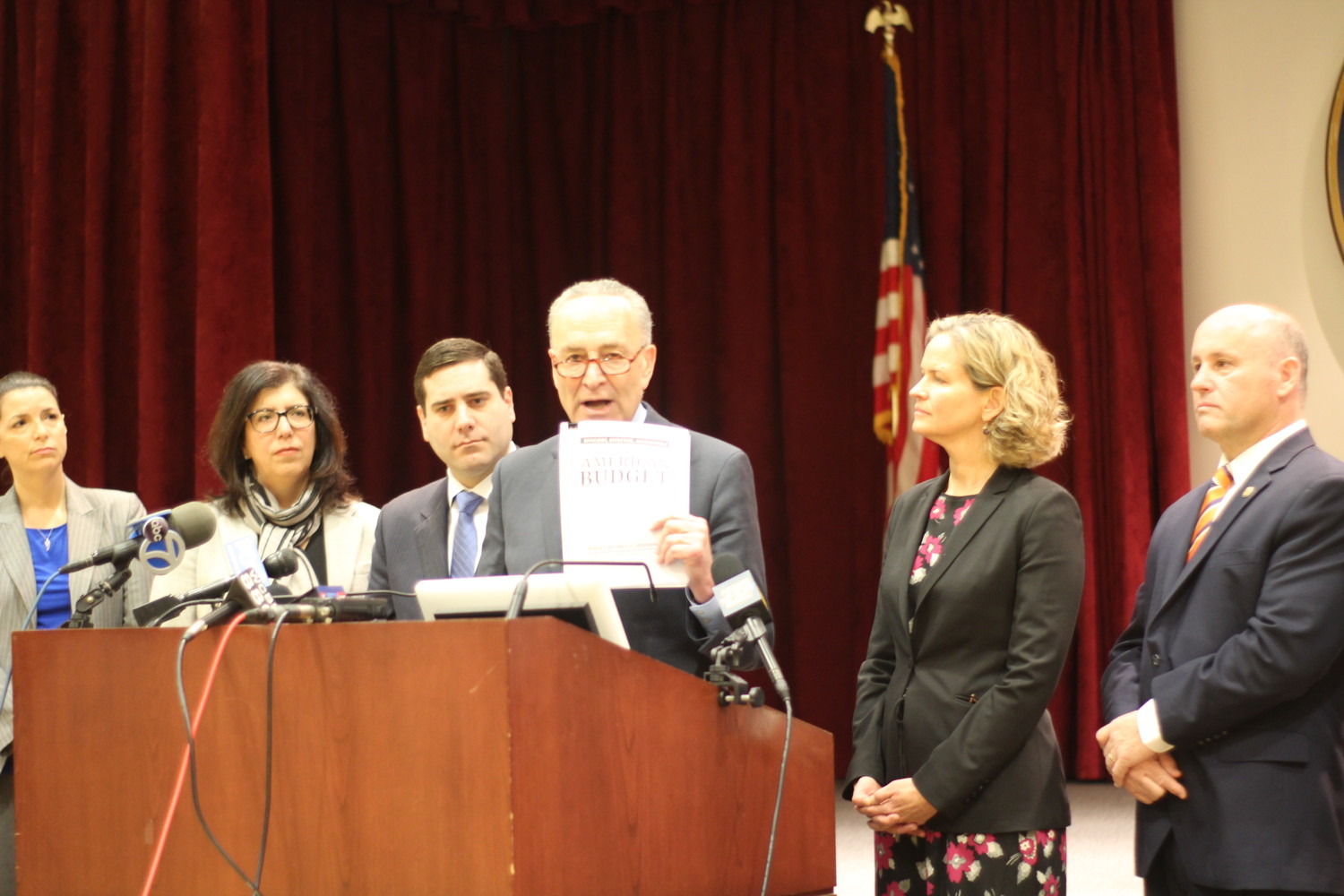Schumer: White House budget will jeopardize opioid fight
Claims anti-drug program shift from White House to DEA would render it “almost useless.”
U.S. Sen. Charles Schumer, the Democratic minority leader, denounced the White House’s 2019 federal budget proposal on Feb. 26, which includes a move of the High Intensity Drug Trafficking Areas program from the White House’s Office of the National Drug Control Policy to the Department of Justice’s Drug Enforcement Administration.
“One of the best tools we have, HIDTA, in this new budget put out by the feds a week ago would be terribly downgraded and rendered almost useless,” Schumer said at a news conference.
HIDTA funds are given out nationwide to fund initiatives that combat drug trafficking and other drug-related issues. OD Maps, the real-time mapping software that tracks opioid overdoses in Nassau County, was developed in Baltimore, Maryland, through a HIDTA grant, Nassau County Police Commissioner Patrick Ryder said.
“We’ve been pushing programs all along with HIDTA,” Ryder said. “They fund us in some of these programs.”
Currently, HIDTA is being used to fight the national opioid crisis, with approximately 64,000 Americans dying of drug overdoses in 2016 — and over 42,000 of those deaths caused by fentanyl, heroin or prescription opioids, according to the White House’s proposal.
Schumer noted that over 600 Long Islanders died of overdoses in 2016 — almost two per day — and that if it were not for opioid antidote drug nalaxone, that statistic would be far worse.
“The bottom line is that opioids are a scourge in New York,” Schumer said.
The White House wants to shift HIDTA to the DEA in order to consolidate anti-drug law enforcement efforts. Should the move be included in the final federal budget, the DEA would be responsible for overseeing the program’s $275 million dollar budget, and all expenditure and grant decisions would be made by the agency.
“Consolidating anti-drug law enforcement efforts in the DEA would better focus resources on the most dangerous, complex, and interjurisdictional drug trafficking organizations in the United States,” according to the proposal.
Schumer explained that HIDTA allows for cooperation and communication between federal and local law enforcement. This proposed move, Schumer argued, would take a high-priority White House initiative and bury it in the Justice Department.
“And that means one rotten word: bureaucracy,” Schumer said.
Schumer questioned the administration and the Justice Department on this proposed change, but according to Schumer, he has not received an answer. He also believes that, even if the administration does not change its stance, there will be bipartisan support in the House and Senate to keep HIDTA under the Office of the National Drug Control Policy.
HIDTA currently “is not stuck behind an agency,” Ryder added, “and we can go to them for anything that we need and the resources always come back, or at least the solution on how we can get it done.”
Along with Ryder, Nassau County Executive Laura Curran and Nassau County District Attorney Madeline Singas joined Schumer in support of his pledge to fight against the proposed change.
“We’re not asking for more resources,” Curran said. ‘We’re asking for efficient and effective collaboration and using of those resources.”
“With its location in the Office of the National Drug Control Policy,” Singas said, “HIDTA has long been a White House priority, and why change it now?”
Ultimately, Schumer boiled down his argument against this proposed move to one simple phrase: “If it ain’t broke, don’t fix it.”
“The good news is that this is in the upcoming budget,” Schumer said. “We are going to have to get this done by March 25 — a month from now — and I am one of the four people negotiating that budget. My very highest priority will be to restore HIDTA to the place that it should be.”

 44.0°,
Mostly Cloudy
44.0°,
Mostly Cloudy 




